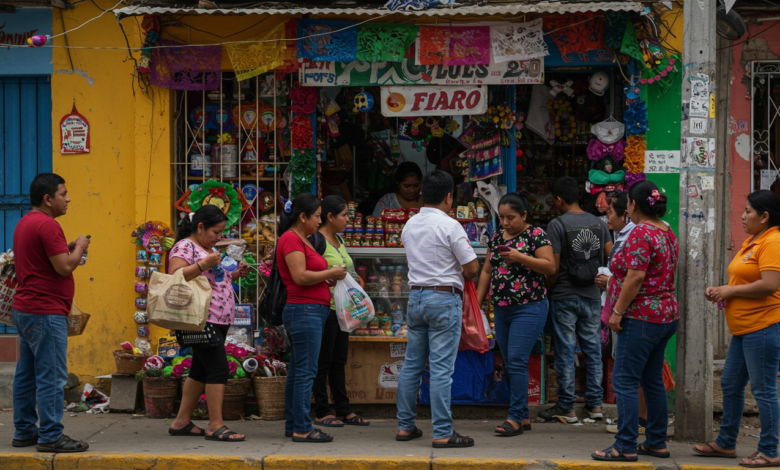Mexico Experience Small Business Recovery After Natural Disasters Challenges and Strategies

Mexico’s geographical location makes it highly vulnerable to natural disasters such as hurricanes, earthquakes, and floods. These events pose severe challenges to small businesses, which often lack the financial resources and preparedness to recover quickly. The aftermath of such disasters includes business closures, infrastructure damage, and economic downturns in affected areas. This article explores the impact of natural disasters on small businesses in Mexico, the obstacles they face during recovery, and the strategies needed to build resilience.
Impact of Natural Disasters on Small Businesses
Natural disasters can have catastrophic effects on Mexico’s small businesses, disrupting operations and leading to financial distress.
Hurricanes and Their Economic Toll
Mexico is frequently hit by powerful hurricanes, with devastating consequences for small enterprises. For example, in October 2023, Hurricane Otis, a Category 5 storm, struck Acapulco, causing widespread damage. Nearly 80% of hotels were affected, leading to substantial economic losses in the tourism sector—a primary revenue source for the region. Estimates suggest that between 200 and 300 billion pesos (US $17.2 billion) would be required for reconstruction efforts in the affected areas.
Also Read: Andy Beshear Car Accident: Full Details and Updates
Earthquakes and Structural Damage
Mexico is also highly prone to earthquakes. The 2017 Central Mexico earthquake, measuring 7.1 on the Richter scale, resulted in the collapse of over 40 buildings in Mexico City. Many businesses suffered extensive losses due to damaged property, loss of inventory, and decreased consumer spending. Without immediate financial support, many enterprises were unable to reopen, contributing to long-term economic stagnation in affected communities.
Flooding and Infrastructure Challenges
Flooding, particularly in coastal and low-lying areas, disrupts business operations by damaging properties, cutting off supply chains, and reducing consumer foot traffic. States such as Tabasco, Veracruz, and Chiapas regularly experience severe flooding, causing extensive losses for local businesses. The costs of rebuilding, along with disruptions in electricity and transportation, further delay recovery efforts.
Challenges in Business Recovery
Despite the resilience of Mexican entrepreneurs, recovering from natural disasters is an uphill battle. Small businesses face multiple obstacles that hinder their ability to bounce back, including lack of insurance, financial constraints, and poor disaster preparedness.
1. Low Insurance Coverage
One of the biggest hurdles to recovery is limited insurance coverage among small businesses. After Hurricane Otis, reports indicated that only 12% of Acapulco businesses were insured, and only 10% to 15% of those affected were expected to reopen within the year. Many small enterprises cannot afford traditional insurance policies, leaving them vulnerable to financial ruin after disasters.
2. Limited Access to Funding
Rebuilding a business requires significant financial investment, yet many small business owners struggle to obtain loans or government aid. Although the federal government announced a 61.3-billion-peso (US $3.5 billion) recovery plan for businesses affected by Hurricane Otis, accessing these funds can be difficult due to bureaucratic red tape and complex application processes.
3. Lack of Disaster Preparedness
A significant number of small businesses do not have disaster preparedness plans in place. Studies show that more than 50% of companies in Mexico lack a structured recovery plan for sudden disasters. Without preemptive strategies such as emergency savings, alternative supply chains, and backup systems, businesses face prolonged closures and economic instability.
4. Supply Chain Disruptions
Natural disasters can disrupt supply chains by damaging roads, ports, and communication networks. For example, after Hurricane Otis, businesses in Acapulco struggled to receive goods and raw materials due to widespread infrastructure damage. Such disruptions further delay the recovery process, making it harder for businesses to resume normal operations.
Strategies for Enhancing Small Business Resilience
While natural disasters are inevitable, Mexican small businesses can adopt several strategies to improve their resilience and recovery capacity.
1. Expanding Insurance Access: Parametric Microinsurance
One promising solution to the insurance gap is parametric microinsurance. Unlike traditional policies that require damage assessments before payouts, parametric insurance provides automatic payouts based on disaster severity (e.g., hurricane wind speed or earthquake magnitude). This enables faster access to funds for recovery. However, high premiums remain a challenge, making government subsidies or partnerships with financial institutions crucial for wider adoption.
2. Strengthening Government and Private Sector Support
Both government and private sector initiatives are essential for business recovery. The private sector, including organizations like Coparmex, has sought international funding to assist in reconstruction efforts. Increasing public-private collaboration can improve access to financial aid and create more robust recovery programs.
3. Implementing Disaster Preparedness Programs
Businesses must prioritize disaster preparedness training and recovery planning. Key steps include:
- Conducting regular emergency drills to train employees.
- Developing backup supply chains to prevent operational disruptions.
- Securing emergency funds for post-disaster expenses.
4. Leveraging Technology for Disaster Management
Technology can play a crucial role in disaster preparedness and recovery. Businesses can:
- Use cloud-based storage to protect important business data.
- Utilize early warning systems to anticipate and respond to disasters effectively.
- Implement mobile banking solutions to access funds quickly during crises.
5. Encouraging Community Support Networks
Stronger community ties can facilitate faster recovery. Businesses that actively engage in local support networks and share resources with neighboring enterprises tend to recover more quickly. Mutual aid programs, cooperative business groups, and local fundraising efforts can provide critical financial and logistical support.
Conclusion
Natural disasters pose significant challenges for small businesses in Mexico, often leading to long-term financial struggles and closures. However, by addressing issues such as low insurance coverage, financial constraints, and lack of preparedness, businesses can become more resilient. Government and private sector initiatives, alongside innovative solutions like parametric microinsurance and disaster preparedness programs, can play a key role in ensuring faster recovery and economic stability.
Also Read: The UndergrowthGameline Hosted Event: A Premier Gaming Experience
Through a combination of policy improvements, financial support, and proactive business strategies, Mexico’s small businesses can better withstand the impacts of natural disasters and emerge stronger from crises.



